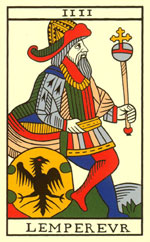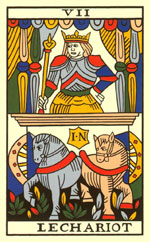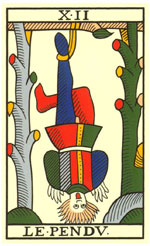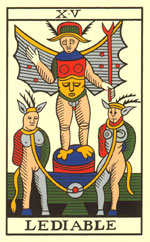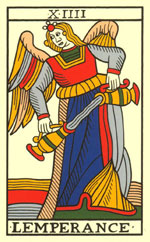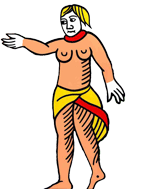
by Enrique Enriquez

The Tarot is a creation of Christian Medieval Europe
Say that to a typical Tarot fanatic. Some of these zealots will stare at you without blinking, and then change the subject. Others will accidentally swallow their own wigs. Some will even start vomiting up lentil soup, like Linda Blair in “The Exorcist.”
Why?
Because the Tarot has been held hostage for over 200 years.
As in any other kidnapping, the motive here is money. Every year, several dozen decks are launched on the market, each featuring the most absurd ideas, theories and points of view. Based on the belief that “no one really knows where the Tarot comes from”, a few publishers and authors fill their pockets with money, leaving the true Tarot buried under a ton of lies.
A kidnapping which has lasted 200 years…
It only requires a good look at the Tarot, a single glance empty of ego or personal agendas, to understand that the Tarot comes neither from Egypt, nor from Atlantis, nor from an extinct planet called Krypton. It only takes one good, humble look to see how the Tarot doesn’t contain the secret recipe for making Mary Magdalen’s favorite salad dressing. It only takes one sober look to understand that the Tarot comes, as I said before, from Christian Medieval Europe. The Tarot developed there. There is no need to go so far astray to understand its true purpose and meaning.
There are many more-or-less logical theories about the Tarot’s connection with medieval Christianity. One of my favorite texts on the matter comes from Michael Hurst, and you can read it here. You can also consult Jean Claude Flornoy’s thoughts here, or search the enormous amount of historical data which can be found here.
I have read the words of a very agitated author who claims that a careful look at the life of the Buddha can help you detect a myth of redemption in the Tarot. I wonder why this author had to go so far, when in fact one can find such a myth in the very same culture in which the Tarot originated: Christian Europe. The fluffy logic of today’s average Tarot enthusiast is that we can only speculate about the origins of the Tarot. That is true. But why do we have to take our speculations as far as ancient Egypt, Lady Godiva’s menstrual cramps, or the lost Atlantean recipe for clam pie? Christian Europe should suffice.
Obsessed as all these authors have been at finding the Tarot’s “occult” code, they have ignored the “public” code, apparent just by looking at the images depicted in the Tarot de Marseille.
Why is it so important to insist on all of this? First, to vindicate the Tarot as an unique instrument of spiritual inspiration native to the Western world. The Tarot can be as useful today as it was 500 years ago because, as Michael Hurst would put it, it invites us to “know our place, practice our virtues, and trust god.” This is a useful and powerful message, no matter what our personal beliefs may be. Second, it is important to insist on all of this because the Tarot’s contemporary image has been shaped by con-men and lunatics, giving rise to all kinds of absurd theories and bizarre explanations.
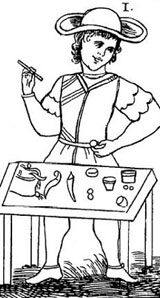
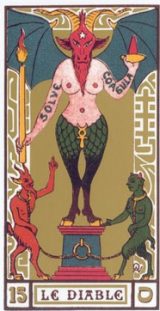
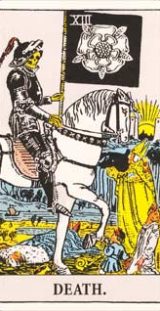
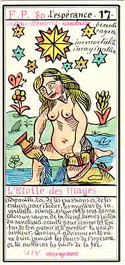
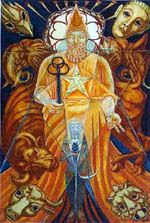
Talking about the bizarre, it is good to remember that the idea of the Tarot coming from Egypt was an invention of Antoine Court de Gebelín, an “occultist” who, the story goes, “discovered” the Tarot in 1771 when he saw some ladies playing cards. The Rosetta Stone had been discovered a few years earlier. Egypt was fashionable at that time, and Court de Gebelín had a ball projecting all his fantasies onto the Tarot. He also took some liberties: he gave a fourth leg to Le Bateleur’s table, put a zero on Le Mat’s card, turned Le Pendu upright… Up until that time, the Tarot had been a work of sacred art, transmitted through a lineage of master image-makers. Master card-makers would contribute their talent to the tradition, reproducing images from an unknown artist. Court de Gebelín started the “Tarot of the Ego.” He was the first untrained amateur who dared to redesign these images and claim authorship over them. Today we know that all Court de Gebelín “saw” in the Tarot was false. It was all a fantasy. But these fantasies were perpetuated by several generations of “occultists” who followed suit, adding their egos, and their last names, to the Tarot. The biggest problem we have is that, since Court de Gebelin and friends first laid their eyes on the Tarot, they decided to see in it something else, not the Tarot. This misunderstanding, fostered by a mixture of arrogance and ignorance from these so-called occultists, has given us a carnival of pseudo-tarots, all of them mirrors of their author’s ego, none of them truthful to the Tarot’s true nature or purpose. From this period come all the alleged relationships between the Tarot and the Cabala, Astrology, the Emerald Tablet, Mexican cock-fights, Yoga, the Chakras and Josie & the Pussycats.
No wonder the image of a Tarot reader conjures up suspicion and contempt in the mind of the general public!
The most notable of these “occultists” was Arthur E. Waite who, in the beginning of the 20th Century, commissioned Pamela Colman Smith to create a new design for the Tarot. Waite is known worldwide for “illustrating” the so-called minor arcana. With this gesture, the “Tarot of the Ego” evolved into the “Tarot for Kids”. This is the Tarot of those who prefer to read Paulo Cohelo instead of Dante. The Tarot of those who will choose Prozac over Plato, any day. The Rider Waite-Smith deck was built, then, upon a mistaken tradition, one which laid the foundations for all the silliness and madness we observe today in the Tarot: “The Blinking Navel Tarot”, “The Ron Jeremy Tarot”, “The Krishnamurti Casual Friday Tarot,” and a myriad of other clones, all absurd, all far removed from the original source.
Con-men and madmen…
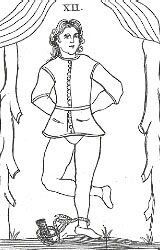
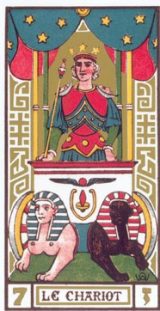
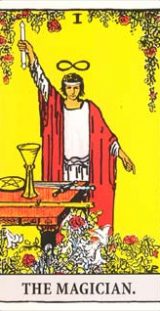
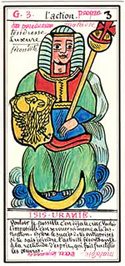

When we look at the Marseille Tarot, La Papesse informs us that knowledge triumphs over ignorance and deceit. Fortunately, there are some people interested in freeing the Tarot from its kidnappers. For them, a return to source-material is necessary. The re-edition of the Jean Noblet Tarot, the oldest remaining Marseille-type deck, means that for the first time in over three centuries we can look at the Tarot as it was, without intermediaries or layers of fairy dust. At the same time, access to historical material is becoming easier. All the lies that have long been encumbering the Tarot will persist only among those who get a kick out of conspiracy theories. Beyond the sirens’ song of the market, the possibility of experimenting with the Tarot as an unique visual pathway to self-knowledge has been re-opened…
